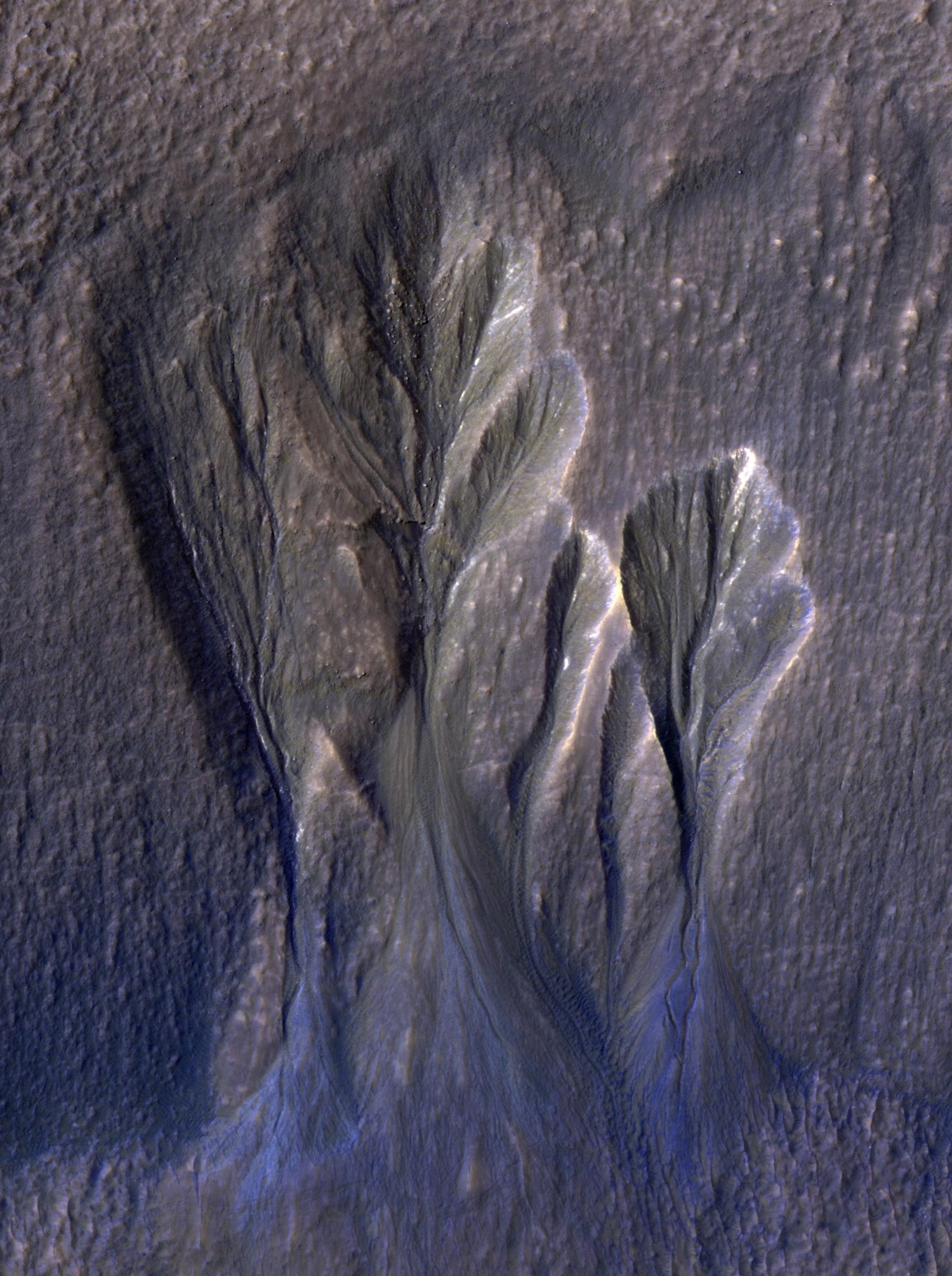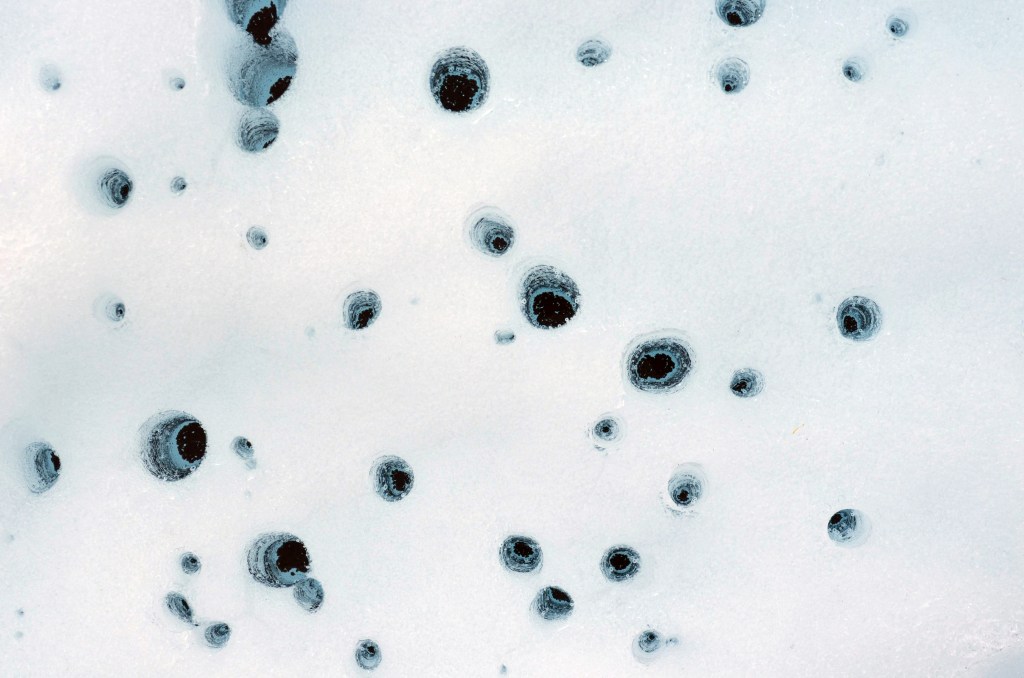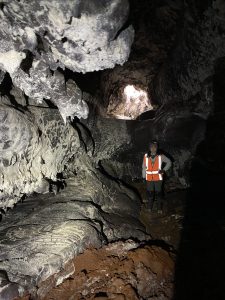Could Life Exist Below Mars Ice? NASA Study Proposes Possibilities
Researchers think meltwater beneath Martian ice could support microbial life. While actual evidence for life on Mars has never been found, a new NASA study proposes microbes could find a potential home beneath frozen water on the planet’s surface. Through computer modeling, the study’s authors have shown that the amount of sunlight that can shine […]

4 min read
Preparations for Next Moonwalk Simulations Underway (and Underwater)
Researchers think meltwater beneath Martian ice could support microbial life.
While actual evidence for life on Mars has never been found, a new NASA study proposes microbes could find a potential home beneath frozen water on the planet’s surface.
Through computer modeling, the study’s authors have shown that the amount of sunlight that can shine through water ice would be enough for photosynthesis to occur in shallow pools of meltwater below the surface of that ice. Similar pools of water that form within ice on Earth have been found to teem with life, including algae, fungi, and microscopic cyanobacteria, all of which derive energy from photosynthesis.
“If we’re trying to find life anywhere in the universe today, Martian ice exposures are probably one of the most accessible places we should be looking,” said the paper’s lead author, Aditya Khuller of NASA’s Jet Propulsion Laboratory in Southern California.
Mars has two kinds of ice: frozen water and frozen carbon dioxide. For their paper, published in Nature Communications Earth & Environment, Khuller and colleagues looked at water ice, large amounts of which formed from snow mixed with dust that fell on the surface during a series of Martian ice ages in the past million years. That ancient snow has since solidified into ice, still peppered with specks of dust.
Although dust particles may obscure light in deeper layers of the ice, they are key to explaining how subsurface pools of water could form within ice when exposed to the Sun: Dark dust absorbs more sunlight than the surrounding ice, potentially causing the ice to warm up and melt up to a few feet below the surface.

Mars scientists are divided about whether ice can actually melt when exposed to the Martian surface. That’s due to the planet’s thin, dry atmosphere, where water ice is believed to sublimate — turn directly into gas — the way dry ice does on Earth. But the atmospheric effects that make melting difficult on the Martian surface wouldn’t apply below the surface of a dusty snowpack or glacier.
Thriving Microcosms
On Earth, dust within ice can create what are called cryoconite holes — small cavities that form in ice when particles of windblown dust (called cryoconite) land there, absorb sunlight, and melt farther into the ice each summer. Eventually, as these dust particles travel farther from the Sun’s rays, they stop sinking, but they still generate enough warmth to create a pocket of meltwater around them. The pockets can nourish a thriving ecosystem for simple lifeforms..
“This is a common phenomenon on Earth,” said co-author Phil Christensen of Arizona State University in Tempe, referring to ice melting from within. “Dense snow and ice can melt from the inside out, letting in sunlight that warms it like a greenhouse, rather than melting from the top down.”
Christensen has studied ice on Mars for decades. He leads operations for a heat-sensitive camera called THEMIS (Thermal Emission Imaging System) aboard NASA’s 2001 Mars Odyssey orbiter. In past research, Christensen and Gary Clow of the University of Colorado Boulder used modeling to demonstrate how liquid water could form within dusty snowpack on the Red Planet. That work, in turn, provided a foundation for the new paper focused on whether photosynthesis could be possible on Mars.
In 2021, Christensen and Khuller co-authored a paper on the discovery of dusty water ice exposed within gullies on Mars, proposing that many Martian gullies form by erosion caused by the ice melting to form liquid water.
This new paper suggests that dusty ice lets in enough light for photosynthesis to occur as deep as 9 feet (3 meters) below the surface. In this scenario, the upper layers of ice prevent the shallow subsurface pools of water from evaporating while also providing protection from harmful radiation. That’s important, because unlike Earth, Mars lacks a protective magnetic field to shield it from both the Sun and radioactive cosmic ray particles zipping around space.
The study authors say the water ice that would be most likely to form subsurface pools would exist in Mars’ tropics, between 30 degrees and 60 degrees latitude, in both the northern and southern hemispheres.
Khuller next hopes to re-create some of Mars’ dusty ice in a lab to study it up close. Meanwhile, he and other scientists are beginning to map out the most likely spots on Mars to look for shallow meltwater — locations that could be scientific targets for possible human and robotic missions in the future.
News Media Contacts
Andrew Good
Jet Propulsion Laboratory, Pasadena, Calif.
818-393-2433
andrew.c.good@jpl.nasa.gov
Karen Fox / Molly Wasser
NASA Headquarters, Washington
202-358-1600
karen.c.fox@nasa.gov / molly.l.wasser@nasa.gov
2024-142
Share
Details
Related Terms
What's Your Reaction?


















































